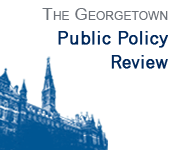The passage of healthcare reform on March 21 was a large step in the right direction in the progressive movement’s century-long fight to achieve healthcare coverage for all Americans. It was also a key win for Obama at a time when he was catching flak from the right for his “socialist” policies and from the left for his lack of legislative accomplishments. The victory also provides Obama and Democrats with some momentum, giving them a greater chance of passing a few more items on the agenda before the midterm elections in November (in which the Democrats are all but assured to lose seats). In fact, the House and Senate have already fulfilled one of Obama’s non-healthcare campaign promises by restructuring the federal student loan program in an overshadowed section of the healthcare legislation.
The reconciliation bill of budget “fixes” that made the Senate healthcare bill more palatable to House members also contained a number of provisions related to college education (which were important enough that the bill was named the Health Care and Education Reconciliation Act). Chief among the changes was an overhaul of the federally subsidized loan system. In its current form, the government subsidizes and guarantees loans for students who meet a certain level of financial need, determined by the Free Application for Federal Student Aid (or FAFSA, which is—ahem—due in a couple weeks). The loans, however, are provided by private banks—at a hefty profit. That system essentially provides a federal backstop against the vast majority of private losses due to default. By lending money to students directly, the government will save an estimated $61 billion over 10 years, $36 billion of which will be redirected to the Pell grant program for low-income students.
The changes still fall short, however, of what is needed to substantially improve the educational outcomes of potential college students, especially those from low-income households. Although the increased funding for Pell grants will give more lower-income students a chance to earn a BA or AA degree, the high dropout rate at community colleges will limit the grants’ effectiveness. According to Robert Lerman, a labor economist and fellow at the Urban Institute, “less than 30 percent of community college students who expect to obtain an associate’s degree actually do so” (2007, 67).
Further, the bill contains only a neutered version of the president’s “American Graduation Initiative,” which is aimed at increasing college graduation rates and bolstering job training at community colleges across the country. Community colleges, which—according to the New York Times—would have received $10 billion for job training, will now receive only $2 billion. These types of programs are key to ensuring that community college students are receiving the skills to fill middle-skill jobs like health technician, which offers workers with only two-year credentials salaries roughly equal to the median salary for a graduate with a BA (Jacobson and Mokher 2009, 26).
There is still much work to be done before college becomes affordable to lower-income Americans and before those students are given the type of training that will help them in the job market. The healthcare reconciliation bill, however, provides a good start. The next important step is for Congress to reauthorize the Workforce Investment Act (WIA) this year.
With a big legislative victory under their belts, let’s hope an emboldened Congress will take up the college education issue again—and soon. Today’s high school students are depending on it.
References
Jacobson, Louis and Mokher, Christine. 2009. Pathways to Boosting the Earnings of Low-Income Students by Increasing Their Educational Attainment. Hudson Institute Center for Employment Policy (January 2009), http://www.hudson.org/files/publications/Gates%2001-07.pdf.
Lerman, Robert I. 2007. Career-Focused Education and Training for Youth. In Reshaping the American Workforce in a Changing Economy, ed. Harry J. Holzer and Demetra Smith Nightingale, 67. Washington, DC: The Urban Institute Press.
Established in 1995, the Georgetown Public Policy Review is the McCourt School of Public Policy’s nonpartisan, graduate student-run publication. Our mission is to provide an outlet for innovative new thinkers and established policymakers to offer perspectives on the politics and policies that shape our nation and our world.
